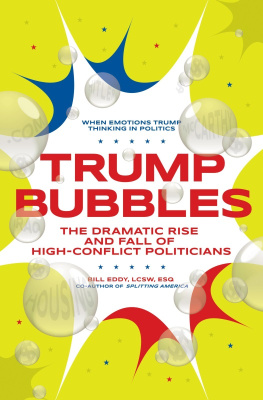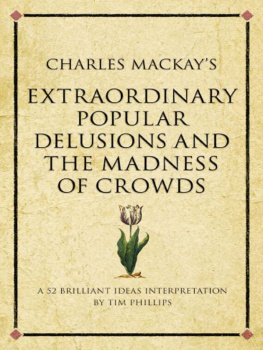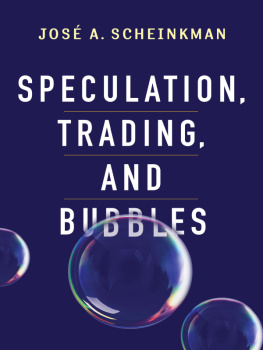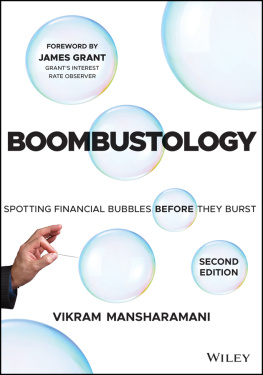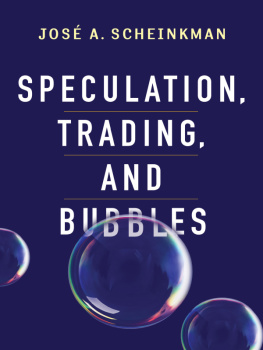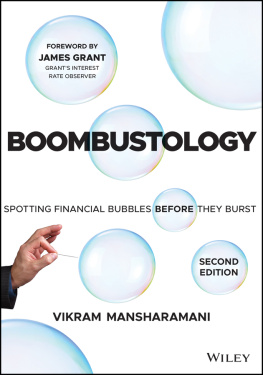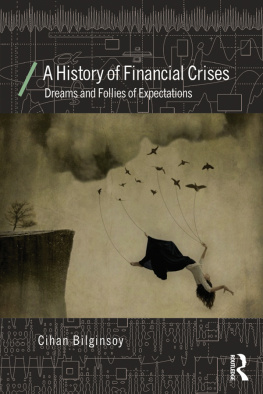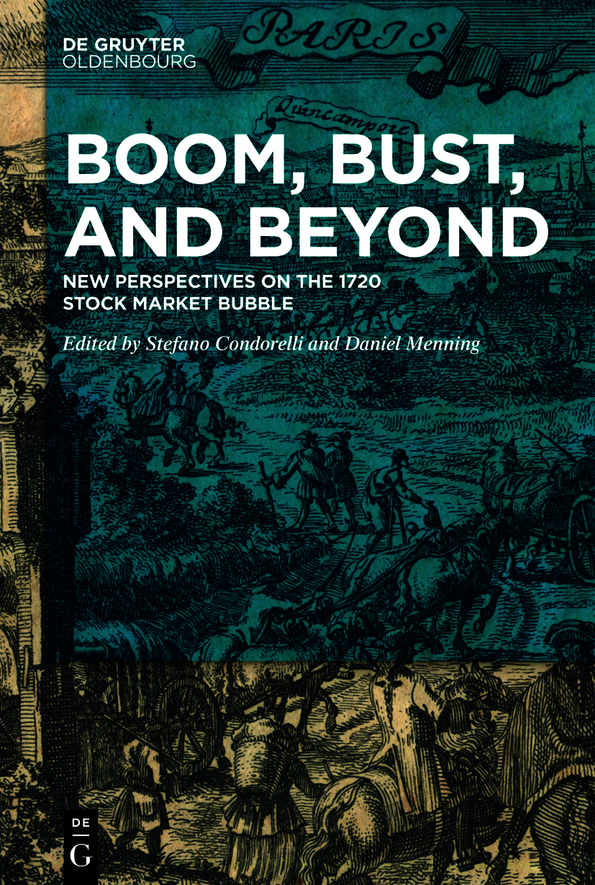Boom, Bust, and Beyond
Boom, Bust, and Beyond
New Perspectives on the 1720 Stock Market Bubble
Edited by
Stefano Condorelli
Daniel Menning
ISBN 9783110590562
e-ISBN (PDF) 9783110592139
e-ISBN (EPUB) 9783110590715
Bibliographic information published by the Deutsche Nationalbibliothek
The Deutsche Nationalbibliothek lists this publication in the Deutsche Nationalbibliografie; detailed bibliographic data are available on the Internet at http://dnb.dnb.de.
2019 Walter de Gruyter GmbH, Berlin/Boston
Acknowledgements
Many of the chapters in this volume originate from the conference Boom, Bust and Beyond: New Perspectives on the 171920 stock Euphoria which was held at the University of Tbingen in April 2018. Funding for the conference as well as this book was provided by the German Research Foundation (DFG) via the Collaborative Research Center 923 Threatened Orders Societies under Stress, project E04 After the stock market crash of 1720 threat diagnosis and crises management in Paris and London as well. For his part, Stefano Condorellis research was funded by the Swiss National Science Foundation. We would like to thank these institutions for their generous support. Also, we would like to express our gratitude to the authors of this volume. It is thanks to them that this book is published in advance of the tercentennial, and we hope its findings will have an influence on the debates to come well beyond the year 2020.
In addition, we are grateful to Renate Drr (Tbingen), who was a co-organizer of the conference. Kristin Condotta Lee (New Orleans) and Lena Moser (Tbingen) helped with the proof-reading, and Julietta Fricke (Tbingen) took care of the footnotes. Finally, we would like to thank Eve Rosenhaft who discovered the cover image and permitted us to use it.
Tbingen/Naples, March 2019 |
Boom, Bust and Beyond An Introduction
Stefano Condorelli
Daniel Menning
The first part of the introduction was written together by Daniel Menning and Stefano Condorelli; the second part (starting with New perspectives on the 1720 bubbles) by Daniel Menning.
I will be going to Pasewalk and Stettin and Prussia for fourteen days next Tuesday to see how matters stand there, wrote King Frederick William I of Prussia to Prince Leopold of Anhalt-Dessau in the summer of 1723. Had I not decided upon it I would certainly not do it, because these are dependences of a different world and their returns I consider to be another Mississippi. Equating his provinces with Louisiana, did Frederick William thus mean that he considered Pomerania and East Prussia like the Parisian shares after the crash as ultimately worthless promises of immense riches?
As Frederick William crossed his provinces in person in 1723, he truly may have believed that he had expended immense riches on a province that was worthless. Pomerania and, to a lesser degree, East Prussia had been hard hit by the Great Northern War (17001721), and both had been devastated by the Great Plague (17091711). In the early 1720s they were still partially depopulated. In addition, the Pomeranian provincial capital of Stettin had been besieged twice during the war and had experienced significant destruction from bombardment. Yet, there was most likely a good degree of irony in the kings original statement. Just three years earlier, in 1720, the Prussian king had bought those parts of Pomerania that he was now about to cross, paying two million thalers. This sum constituted roughly 50% of the Prussian state budget in 1714 and was, therefore, an enormous amount of money for a country still mostly relying on an agricultural economy.
Leaving aside the uncertain precision of the analogy, what may seem surprising, perhaps, is the apparent casualness of the reference to the Mississippi itself. The king was clearly relying on Prince Leopold to grasp at once the reference and potential irony. Yet, it is well known that eighteenth-century royalties like people in general were avid readers of news, in particular international ones.
Frederick William, however, had not only been a passive observer of the bubble. There is evidence that he also actively participated in the stock market and, what is more given the immoral reputation that short trading had at the time that he did so by betting on falling prices. In another letter to Prince Leopold in October 1720, the king stated: The English shares are declining well-behavedly, the Dutch are also doing poorly, but I am profiting from it. Hope to double my capital. It seems quite likely that some, if not most, of them were drawn into these investments during 1720.
Needless to say, the king also paid close attention to the political implications of the financial events. His correspondence with diplomats in Paris and London shows that they were trying to assess the extent to which these unfolding events possibly were altering the balance of power in Europe. Would John Law succeed in shrinking the French sovereign debt? Would the South Sea Company achieve a similar goal in Britain? Could a new war result from the momentary weaknesses of France and Britain, caused by their respective stock market crashes? In that respect, the Prussian government was no exception. We find throughout Europe both in the diplomatic correspondence and the press the same questions and the same attention to the political repercussions of the bubbles.
Prussia really stood out, however, in that it appears to be (together with Poland) the only large European country in 1720 without a single project for a joint-stock company. Research thus far in the archives has given no result, and although it is possible that some scheme may be discovered some day, it is nonetheless clear that Prussia largely shunned the stock euphoria and the rush for state financial innovations that came with it which swept so intensely over the rest of the continent around 1720.
There were two reasons that may partially explain this apparent disinterest. First, Prussia was the only European power not seriously in debt after the conclusion of the War of the Spanish Succession and the Great Northern War. Therefore, a debt-for-equity swap which was central to the Systme de Law in Paris and to the South Sea Company scheme in London was unnecessary in Berlin.
The Prussian king has been, hitherto, an unknown actor in the 1720 bubble. And yet, he is exemplary in two ways. First, he highlights how the events were still in the memory of people who lived at quite a distance from the main actions. Second, he demonstrates that there was a political dimension to the bubble that extended beyond Anglo-French competition. The kings October 1720 letter to Prince Leopold is likewise remarkable for a number of reasons. First of all, that letter represents the only evidence we have so far of a monarch personally stockjobbing the market. This is a finding that says a lot about the diffusion of financial expertise around 1720 as well as about cultural change. To put Frederick Williams speculation in perspective, let us consider that Samuel Johnsons A Dictionary of the English Language in 1755 still defined the stockjobber as a low wretch who gets money by buying and selling shares in the funds. It is all the more interesting to find a monarch-speculator precisely in a country, Prussia, that does not have the reputation of being a frontrunner in early-eighteenth century financial innovation. What is more, the letter is one of the very few direct evidences of a 1720 counterminer (to use the contemporary Dutch term), that is to say a short-seller. Most sources on the subject are indirect, such as newspapers fulminating against these individuals, judicial documents attesting that they could be imprisoned when caught, or a playing card showing a Jew accused of short-selling being thrown into a pond by an angry mob.


